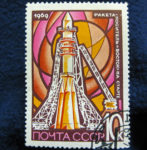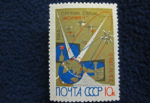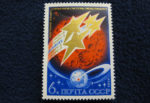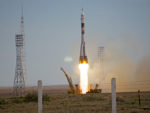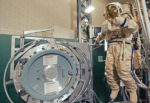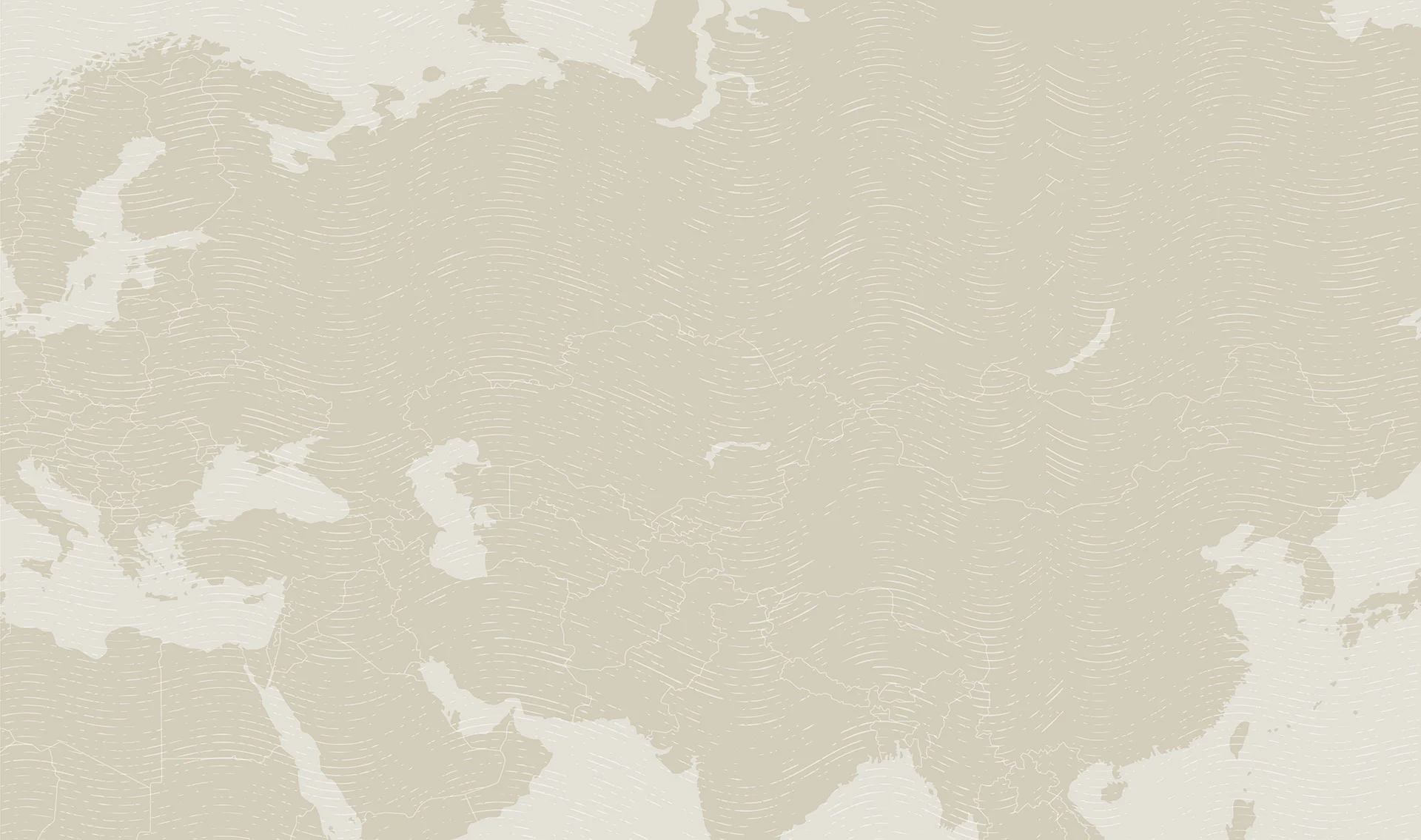Photo credit: Douglas Grimes
Venturing Inside the Russian Space Program
Of all the tours we’ve offered to MIR’s 35 destinations over more than 30 years, the one that I unabashedly like best is our behind-the-scenes Inside the Russian Space Program tour, which harkens back to the Cold War days of the U.S.-Soviet space race.
To me, this tour symbolizes MIR’s expansive spirit – that even space can be the focus for intrepid travelers who are intent on learning more about history, politics, and science on their travel journeys. With its immersive experience in everything related to the Soviet and Russian space program, this tour won an award from National Geographic Traveler’s “50 Tours of a Lifetime” in 2012.
I have personally led every departure of this program since first launching the trip in 2005, and the one thing I never tire of is the opportunity to witness the manned launch of a Soyuz spacecraft from the Baikonur Cosmodrome, located in the remote outback of Kazakhstan. It’s one of the many amazing, one-of-a-kind experiences that this tour offers.
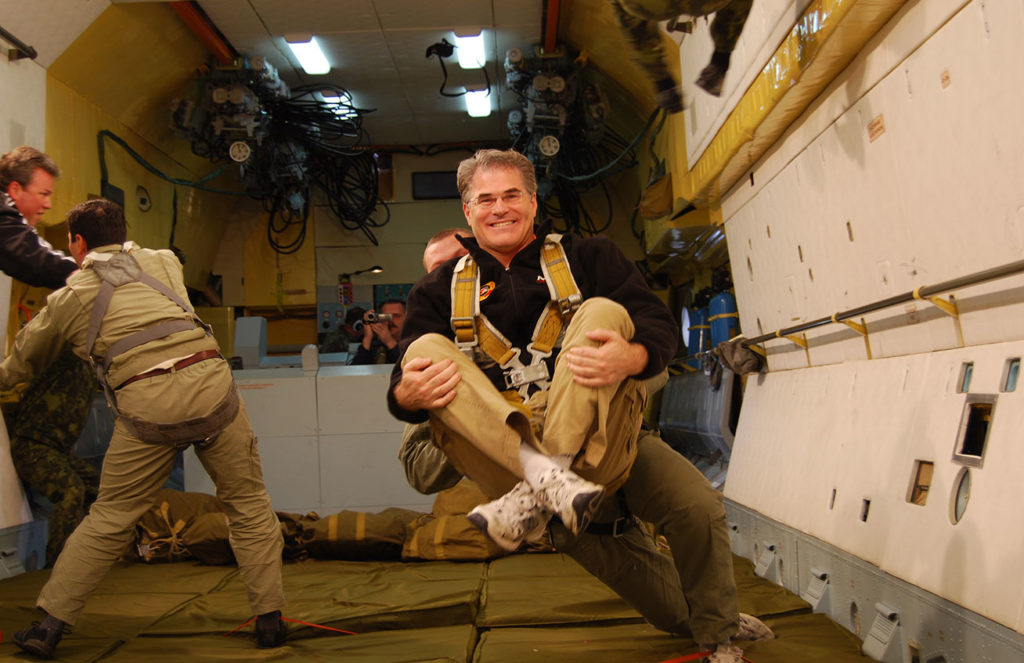
The Beginnings
I’m old enough to remember the U.S.-Soviet space race. I spent a lot of time making model rockets like the Saturn-V, and every kid seemed to dream of being an astronaut one day. It was beyond my wildest imagination that an insider’s look into the once secret Soviet space program would be possible – and that I’d one day be sharing this space-race journey with adventurous travelers from around the world.
(click image to view larger photo)
It wasn’t easy or simple. It took three years of meeting the right people in Russia and eventually making our way to the once highly classified Star City, hidden in a forest near Moscow with a cosmonaut training facility named after Yuri Gagarin, the first man in space. I remember the first time I was there, thinking to myself, “Oh boy – this used to be top secret!”
After some initially tough meetings with officials at the Russian space program, we developed a rapport with them and flew down to the Baikonur Cosmodrome in the Kazakh desert to see the facilities and watch a manned-Soyuz space launch.
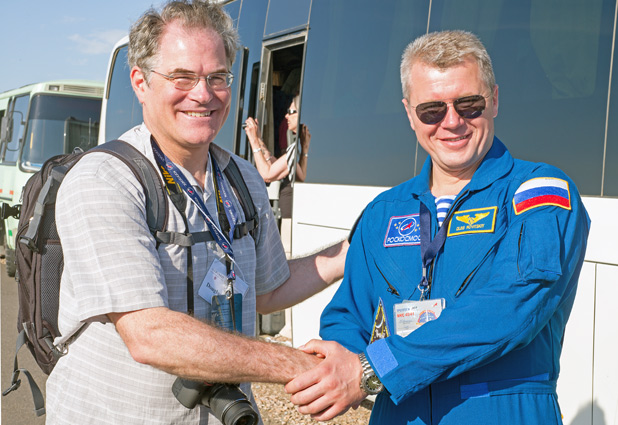
Since that pioneering journey back in 2005, travelers that have joined us on our visits inside the Russian space program year after year have had the opportunity to rub shoulders with Russian space experts from the Roscosmos Space Agency, space veterans, families of the space crews, and foreign dignitaries. I’ve even met celebrities like Martha Stewart and Microsoft’s Charles Simonyi, the first “tourist cosmonaut” to travel twice in space (in 2007 and 2009.)
Insider’s Access
Then and now, we have superb insider’s access at the Soyuz launch: from high-level space experts and cosmonaut training facilities, to Soviet – and now Russian – space traditions, rituals, and ceremonies.
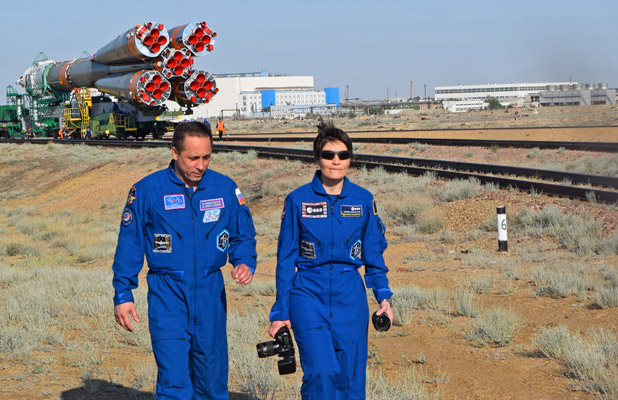
- Rollout of the Rocket Ceremony: This is one of my favorite events. The massive hangar doors open for the early dawn rollout of the Russian rocket; we’re only a few yards away from these gigantic exhaust vents on the Soyuz. Later, the Soyuz crosses a road in the Kazakh desert – yet another up-close photo opportunity.
- Raising of the Rocket Ceremony: The rocket is slowly raised into position at the launchpad. It takes time, it’s noisy, and it’s unforgettable.
- Cosmonauts’ Press Conference: We can ask burning questions of not just the main crew, but the backup crew as well. After the press conference, the cosmonauts depart to prepare for their final preparations, and to suit up.
- Cosmonauts’ Alley: Every cosmonaut who goes up in the Soyuz from Baikonur plants a tree along this alley. Of course, Yuri Gagarin’s tree from 1961 is the oldest, towering over tiny saplings of more recent cosmonauts.
- “Ready to Go” Report: Cosmonauts are fully suited up, walk out, and approach the Baikonur Cosmodrome director and Roscosmos space officials. They indicate they are “ready to go,” shake hands, and are whisked away by bus to the launchpad – in the same manner of the U.S.S.R.’s first cosmonaut, Yuri Garagin.
- Liftoff from VIP Viewing Area: In the U.S. you’re typically five or six miles away from the launchpad. But at Baikonur, we have a VIP viewing area that’s about two miles away. It’s close enough to feel the earth shake beneath our feet – always thrilling.
(click image to view larger photo)
Star City
Sandwiched between all of our insider’s access at the launch is a deep dive into the evolution of the Soviet/Russian space program headquartered at Star City, one component of which is a premier cosmonaut training facility. We visit both the now-retired Mir Space Station simulator as well as the current International Space Station mock-up and Soyuz simulator.
Throughout our tour we also visit museums dedicated to aeronautics and space exploration, like the Monino Aviation Museum. We also view artifacts from the Cold War space race, including a Tupolev Tu-95 bomber and Yuri Gagarin’s space suit.

Train Like a Cosmonaut
Travelers on our Inside the Russian Space Program tour are offered optional cosmonaut training activities at Star City. They’re perfect for those who’ve always wondered what it feels like to be weightless aboard a zero-gravity simulation flight, to don a Russian space suit and practice maneuvers, to dive underwater for spacewalk training in the Hydrolab, or even to feel what 4Gs is like in the world’s largest centrifuge.
(click image to view larger photo)
I’ve done zero gravity training twice, and it’s a lot of fun. We fly in a padded Ilyushin-76 up to 30,000 feet, where it stalls out at the top for about 35 seconds, during which time we become weightless. It pulls about 4Gs and you recover, and then it does another one, repeating this about 10 or 12 times over several hours.
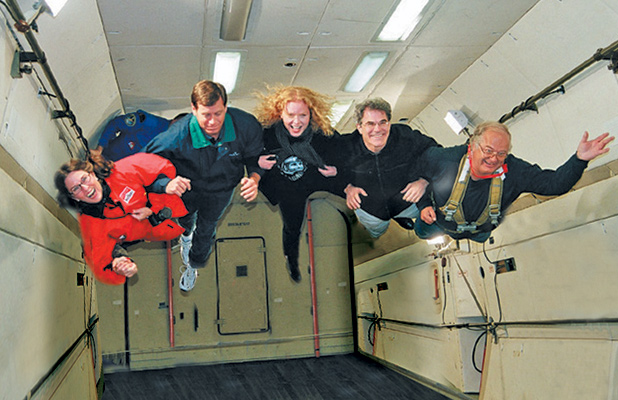
Go Inside the Russian Space Program
The elements on this trip collectively offer a great insider’s view of how the space program works, and how well it works. Over the past few years, the US had been reliant on the Soyuz for delivering our astronauts to the International Space Station. Since the collapse of the Soviet Union, we’ve had a very good working relationship in space with Russia. You see it in the camaraderie between American and Russian crews going up in the Soyuz; they are friends for life.
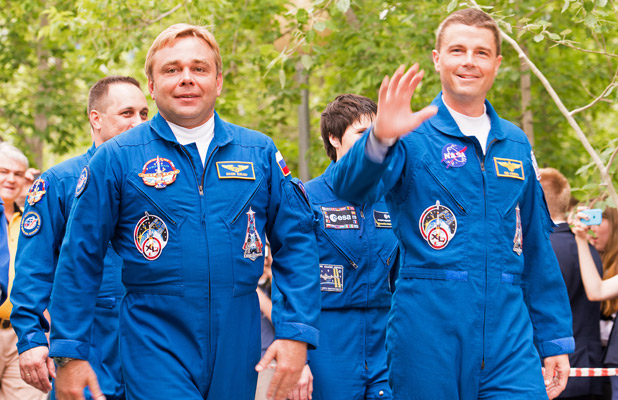
It all fits in with MIR’s original ideology, with our name in Russian meaning both “world” and “peace.” For us at MIR, such friendships, travel, and exploration know no borders or boundaries – even into space.
Want to go inside the Russian Space program yourself? Check out our Inside the Russian Space Program tour and contact us today!
More on “MIR’s 30+ Years”
Want to find out more about MIR’s beginnings and hear some unparalleled travel stories?
Learn more about “MIR’s 30+ Years” of travel experiences and adventures
Contact us today to chat about your travel dreams.
